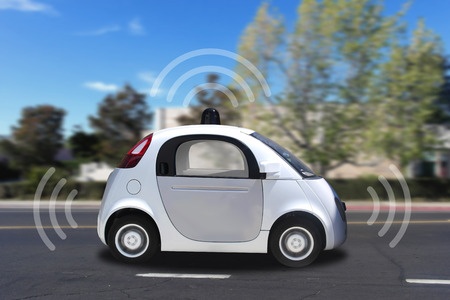The news of driverless automation is currently everywhere, from government regulations to new competitors joining the market.
The market is fast growing and could be worth £900 billion by 2025. The UK government are keen to get the country at the forefront of the fast pace market.
We discuss the key competitors, the questions of safety and what’s to come.
Competitors
There is currently intense competition between carmakers about who can produce the first self-driving car. We outline below a few of the key competitors and where they are with the process.
Ford
Ford have recently committed $1billion into driverless cars. Their new unit Argo will be developed by two engineers who previously worked for Uber and Google.
Their aim is ambitious as they plan to have a fleet of commercial autonomous vehicles out by 2021.
Nissan
Nissan are set to test their driverless cars on London roads in February 2017.
They will be the first in Europe to launch lane driver cars into the public later on this year. These are vehicles that have the ability to steer themselves in motorway lanes. Their Serena minivan with this capability is already available and on sale in Japan. Lane drivers is the first big stop to self-driving cars.
Volvo and Uber
The taxi giant Uber and Volvo have joined forces with a $300m joint investment in developing driverless cars.
Volvo are set to complete pilots in Sweden, London, UK and China. Using real people they will conduct tests to develop their vehicles.
Google – Waymo
Google’s company Waymo has already tested 2 million miles of their self-driving car since 2009. Their aim is to make driving safe for everyone, with no one at the wheel.
Their prototype with no steering, pedals or driver was tested on public roads in Texas in 2015.
Safety
Many are apprehensive about having driverless vehicles on the road. They believe that they bring greater risk than manual driven cars due to malfunctions.
The Government recently ran a stimulator trial. It showed that the more humans rely on machines, the more risks they took. For example the more machine drivers on the road, the more the human drivers edged into smaller gaps between vehicles. One participant even tried to cross a lane of oncoming traffic.
Despite this the government has been recently working on regulations and laws to help make the driverless vehicles as safe as possible for everyone on the roads.
With features such as cars being able to be stopped by pedestrians waving at it, some argue they may be safer. Google’s Waymo states that 94% of accidents are due to human error and driverless cars are the solution to safer roads.
What this means for insurance
The introduction of driverless automation is set to change the transport market as we know it. With this insurance as we know it must change too.
Insurance for driverless cars will have to take into consideration the risk of hacking to operate the software. As well as this the failure of navigation systems and the manufacturers software.
The introduction of 2-in-1 policies for owners of driverless cars has been set out by the government. This means that as soon as the car is in driverless mode the responsibility shifts from the human to the vehicle.
The Future
Rolls-Royce is set to bring out crewless-ships by 2020. Tugboats and ferries will be launched first, followed by cargo ships. They state that is will make sailing safer and reduce transport costs by up to 20%.
Many more driverless vehicles such as boats on the Amsterdam canals are set to roll out soon.
What do you think of driverless automation? Let us know in the comments below.



